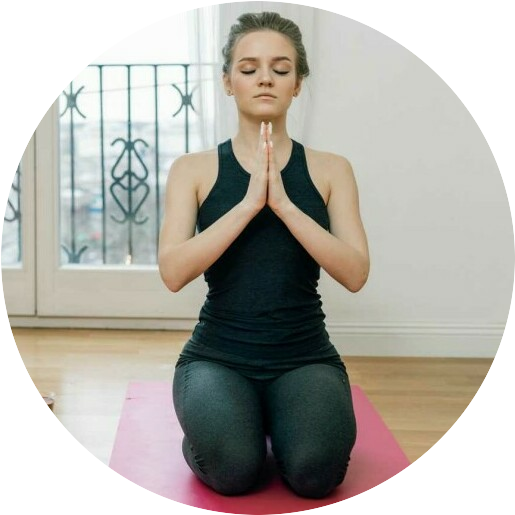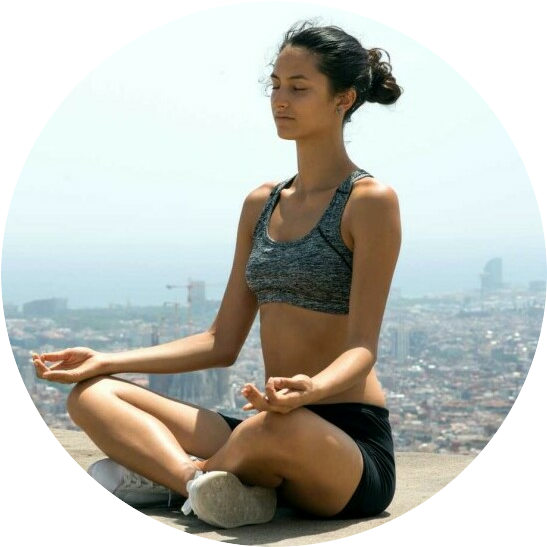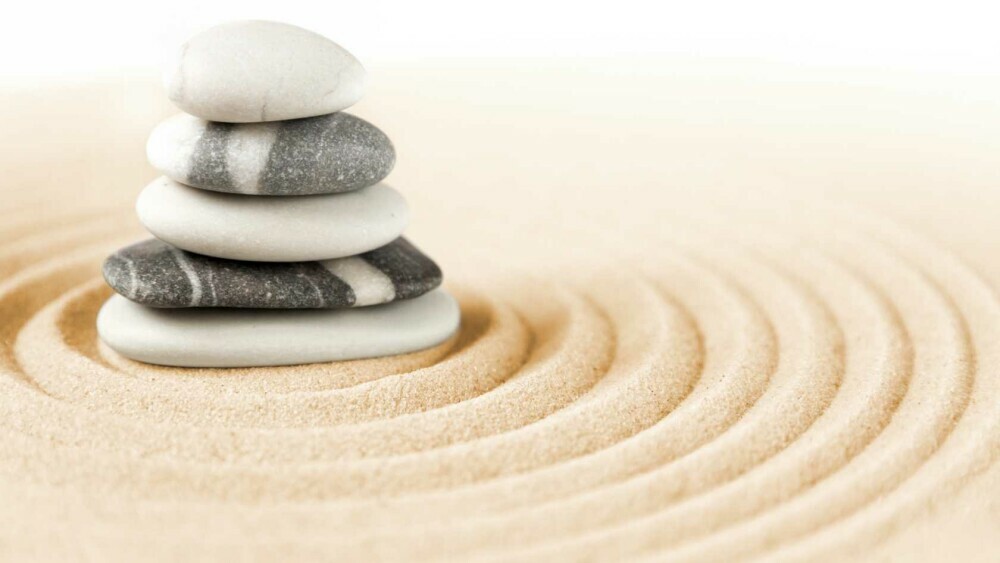Ever found yourself on your meditation cushion, thinking, “Why is my mind still doing the cha-cha-cha when I’m trying to find zen?” If you’re nodding along, you’re not alone. Seasoned meditators get it – the struggle is real. Wondering how to meditate deeply can feel like trying to find a quiet spot in a bustling city. Don’t worry; I’m here to help! Let’s uncover the secrets to deep meditation together and take your practice to new heights.
The Magic of Deep Meditation
Meditation is like a superpower for the mind, but let’s kick it up a notch – deep meditation. What sets it apart? Well, it’s like the VIP lounge of peace and serenity. Regular meditation is your daily cup of calm and deep meditation. Oh, that’s like your mind enjoying a spa day every day.
Understanding Deep Meditation
Wondering about deep meditation? It’s more than just crossing your legs and humming ‘om’ (although that’s cool too). It’s about delving into the quiet spaces between your thoughts, where profound stillness resides.
Deep meditation isn’t just a mental detox; it’s a mindful upgrade. Concentration sharpens, and the mental fog lifts. Your thoughts become allies, not adversaries. Deep meditation is like a reset button, reducing cortisol (the stress hormone) and boosting feel-good endorphins.
Remember, deep meditation is a journey, not a race. Enjoy the process, and let the magic unfold.
Create the Right Environment – Set the Stage for Deep Meditation
Imagine trying to read a book in the middle of a rock concert – not exactly the ideal setting, right? Similarly, deep meditation thrives in a peaceful environment.
Your surroundings influence your state of mind. A quiet and comfortable space serves as the launchpad for your deep meditation journey. It’s like giving your mind a backstage pass to serenity.
Tips for Creating a Conducive Environment

- Identify a spot where external distractions are minimal. It could be a corner of your room, a cozy chair, or even a spot in your garden.
- Make sure your seating arrangement is comfortable. Whether it’s a cushion, chair, or yoga mat, opt for something that supports your posture without causing discomfort.
- Soft, natural light is your friend. If possible, meditate in a room with ample natural light during the day. In the evening, opt for warm, dim lighting to create a soothing ambiance.
- Your body’s comfort is crucial. Ensure the room is at a comfortable temperature – not too hot or too cold. You want to be able to focus on your meditation, not on being too chilly or sweaty.
- A tidy space promotes a calm mind. Clear away any unnecessary clutter, allowing your mind to follow suit.
Postures for Deep Meditation
So, you’ve got your peaceful space, and you’re ready to dive into deep meditation. Now, let’s talk about striking that perfect posture. Your body is unique, and so is your ideal posture. Don’t hesitate to experiment with different positions. Here are seven of them:

Cross-Legged Bliss
The quintessential meditation posture. Sit comfortably on a cushion or mat, cross your legs, and let your hands rest on your knees or in your lap. It’s like creating a cozy nest for your meditation journey.
Chair Charm
Not a fan of sitting on the floor? No worries. Sit on a chair with your feet flat on the ground, hands resting on your thighs. The key is to maintain a straight spine, so imagine a string pulling you upward from the crown of your head.

Kneeling Comfort
Kneel on a cushion or mat with your shins tucked beneath you and your hands resting on your thighs. This posture is a grounding alternative that promotes stability and focus.

Half-Lotus Love
For a variation on the cross-legged classic, place one foot on the opposite thigh while keeping the other foot beneath the opposite knee. This posture offers a balance of stability and flexibility.

Burmese Beauty
Sit comfortably with your legs crossed and both feet flat on the floor. This posture is a relaxed alternative to the full lotus, promoting comfort without sacrificing alignment.
Mountain Majesty
Stand tall with your feet hip-width apart, grounding yourself like a mountain. Let your hands rest gently at your sides. This posture is excellent for those who find comfort and focus in standing meditation.
Savasana Serenity
Lie on your back with your legs extended and arms at your sides. This classic yoga pose, known as Savasana or Corpse Pose, is a restful option for deep relaxation and meditation.
Quick Tip: Strike a balance between relaxation and alertness. Your posture should be like a gentle reminder to your body that it’s time to unwind, but the mind stays tuned in. Listen to your body, and make adjustments as needed.
The Breath’s Role in Deep Meditation
Your breath is the anchor in the sea of thoughts. In deep meditation, it becomes your faithful guide, keeping you connected to the present moment. Here’s why breath awareness is a game-changer:
- Instant Presence: Focusing on your breath brings you into the here and now. It’s a ticket out of the mental time machine that often pulls us into the past or future.
- Calm Amidst Chaos: When the mind is a storm, your breath is the calm center. It’s a steady, reliable source of tranquility, even amid life’s whirlwinds.
Here are three deep breathing exercises that will help you in meditating deeply:
Diaphragmatic Breathing (Abdominal Breathing)
How to do it: Inhale deeply through your nose, allowing your abdomen to expand like a balloon. Exhale slowly through pursed lips, feeling your abdomen gently contract. Focus on the rise and fall of your belly with each breath.
Why it works: This technique engages your diaphragm, promoting a deep and relaxed breathing pattern. It’s a one-way ticket to a calmer state of mind.
4-7-8 Breathing (Relaxing Breath)
How to do it: Inhale quietly through your nose for a count of 4. Hold your breath for a count of 7. Exhale completely through your mouth for a count of 8. Repeat for several cycles.
Why it works: This method slows down the breath, activating the body’s relaxation response. It’s like a natural tranquilizer for your nervous system.
Box Breathing (Square Breathing)
How to do it: Inhale for a count of 4, hold your breath for 4 counts, exhale for 4 counts, and pause for 4 counts before inhaling again. Visualize a square as you move through each phase.
Why it works: Box breathing brings a sense of balance and symmetry to your breath, promoting mental clarity and focus.
Going Deep – Progressing Through Levels of Awareness
As you delve into deep meditation, envision your awareness as a compass guiding you through the thoughts in your mind. Let’s explore various levels of awareness, from the familiar to the wide-ranging.

Stage 1: Anchoring in the Present
In the initial moments of your meditation, your awareness is like a wanderer returning home. It calmly rests in the now, connecting to the beat of your breath or a chosen focus. This is like a steady point, a calm spot amid your thoughts coming and going.
Stage 2: Inner Exploration
As your meditation deepens, your awareness becomes a curious explorer venturing into the depths of your inner world. Thoughts, emotions, and sensations may surface like gentle waves. Instead of resisting, observe them with a compassionate gaze. Your awareness is the lantern illuminating the unexplored corners of your consciousness.
Stage 3: Expanding Beyond the Self
In the next phase, your awareness stretches its wings beyond the confines of the self. It’s like stepping onto a balcony and observing the vast expanse of the mind. You might feel like you’re connected to a bigger understanding, like being part of a woven story that goes beyond just yourself.
Stage 4: Beyond Immediate Surroundings
As your meditation reaches deeper levels, your awareness transcends the immediate surroundings. The boundaries between self and environment blur, and you may feel a sense of unity with the universe. It’s a state where distinctions dissolve, and you become a witness to the interconnectedness of all things.
Stage 5: Pure Presence
At the pinnacle of deep meditation, your awareness converges into pure presence. It’s an effortless state of being, where the observer and the observed merge into a seamless experience. Here, time loses its grip, and you exist in the eternal now.
Quick Tip: The journey of awareness is dynamic, not rigid. Allow your awareness to flow naturally through these stages. Some sessions may linger in one stage, while others may dance between them. Embrace the fluidity of your meditation journey.
Overcoming Challenges in Deep Meditation
Let’s address common challenges that may arise during deep meditation and chart a course to overcome them, ensuring a smoother journey for you.

Challenge 1: The Monkey Mind
The Issue: Your mind is a monkey swinging from thought to thought, making it challenging to find stillness.
Solution: Mindful Watching
Instead of trying to cage the monkey, become the observer. Watch the thoughts swing by without getting entangled. Acknowledge them, then gently guide your awareness back to your anchor – your breath or chosen focal point.
Challenge 2: Restlessness
The Issue: A fidgety sensation, a constant urge to move, making it difficult to settle into meditation.
Solution: Body Scan
Conduct a mental body scan. Start from your toes and gradually move upward, bringing awareness to each part of your body. Notice areas of tension and consciously release them. Allow your body to find comfort.
Challenge 3: Impatience
The Issue: The clock seems to tick louder, and impatience creeps in as you wait for a profound experience.
Solution: Embrace the Journey
Shift your focus from destination to journey. Meditation is not a race; it’s a gradual unfolding. Celebrate each moment of stillness, regardless of how fleeting. Patience is the key to unlocking deeper realms.
Challenge 4: Daydreaming
The Issue: Your meditation transforms into a mental movie marathon, with scenes from the past or future taking center stage.
Solution: Grounding Techniques
Engage your senses. Bring attention to the sensation of your breath, the feeling of the ground beneath you, or the ambient sounds around you. Grounding techniques anchor you to the present.
Challenge 5: Inner Resistance
The Issue: A subtle resistance emerges, making it challenging to surrender to the meditation process.
Solution: Cultivate Compassion
Approach resistance with kindness. Your mind might be protecting itself from stillness. Instead of pushing, invite. Cultivate self-compassion, recognizing that resistance is a part of the journey.
Quick Tip: Adjust Your Expectations
As you navigate these challenges, remember that your meditation practice is uniquely yours. Adjust your expectations and embrace the imperfections. Each session is an opportunity to learn and grow.
Final Words – Embark on Your Deep Meditation Journey
Just as a seed takes time to sprout, so does the profound stillness within you. Be gentle with yourself, and let each meditation session be a step, a learning experience that shapes your practice. The journey itself is the destination.
As you commit to meditation, explore further. Whether you’re a beginner or experienced, there’s always more to discover. Check out the meditation program below to deepen your practice.

